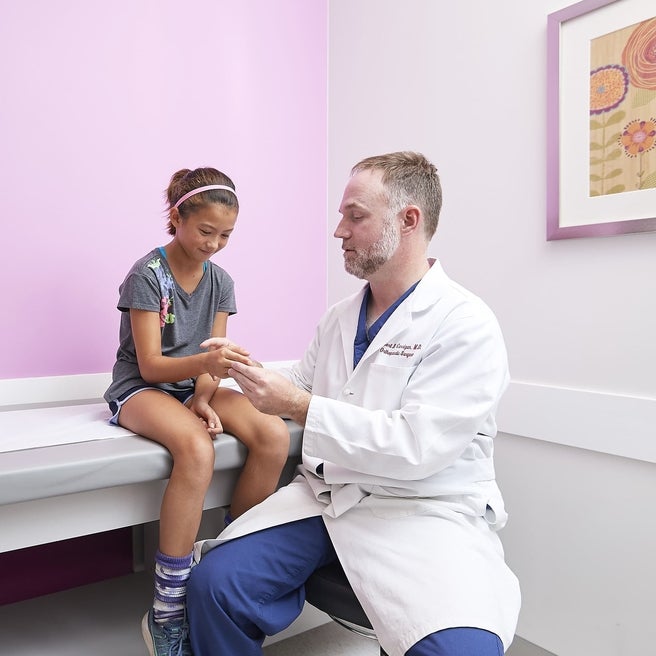What is thumb duplication?

Thumb duplication is a form of polydactyly, a congenital condition where a child is born with more than five digits on a hand or foot. Polydactyly may occur in both the hands and feet.
Children born with thumb duplication (the medical name is preaxial polydactyly or radial polydactyly) have a second complete or partial thumb. Thumb duplication may be better described as a split thumb since neither of the thumbs present appear normal.
An extra thumb is often present on both hands, but some children may just have it on one hand. The duplicate thumb may be well formed or may be smaller and less well formed.
Thumb duplication is often classified based on the Wassel classification of preaxial polydactyly. The most common type of thumb duplication, type IV, involves duplication of multiple parts of the fingers. (Photos show varying degrees of thumb duplication.)
Duplicated thumb is one of the most common congenital hand anomalies, occurring in 1 in every 3,000 births. Thumb duplication is seen frequently in Caucasian and Asian populations.
Causes
Thumb duplication is a congenital condition that occurs while a baby is still developing in the womb. In most cases, the disruption of the normal development of the hand or hands occurs without a specific cause.
In rare cases, thumb duplication may be genetically linked and can be seen in generations of families.
Testing and diagnosis
Sometimes, thumb duplication can be diagnosed before birth during an ultrasound, but it is usually identified after birth.
In order to determine the best course of treatment for your child, doctors at Children’s Hospital of Philadelphia (CHOP) will:
- Conduct a physical exam of your child and take a family medical history
- Use imaging techniques like X-rays to look at the bones of your child’s hand and the extra thumb
Treatment

Surgery is most often the recommended treatment for thumb duplication. The extra thumb will be surgically removed. The remaining thumb will be reconstructed using some of the parts from the amputated thumb to optimize function and appearance.
Surgical reconstruction can be performed when your child is as young as 12 months of age, and is generally performed as an outpatient procedure.
After surgery, your child’s hand will be immobilized in a cast for two weeks.
Follow-up care
Two weeks after surgery, your child will be examined by the hand surgeon, and again six weeks and three months postoperatively. Most children do not need physical or occupational therapy after surgery.
Secondary procedures may be necessary to straighten the remaining thumb if it remains bent (angulated).
You can expect to return to the hand surgeon for several annual visits throughout early childhood. At these visits, our team will monitor the growth and development of the thumb as your child grows to ensure that he is developing appropriate thumb and hand function. This is important as he learns new skills such as writing.
Resources to help
Thumb Duplication Resources
Hand and Arm Disorders Program Resources
We have compiled resources to help you find answers to your questions and feel confident with the care you are providing your child.
